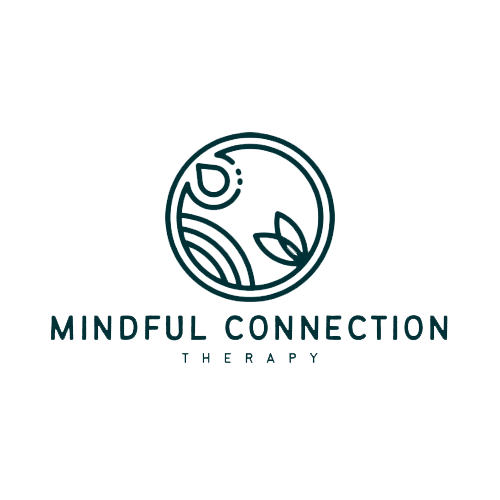Services
-
I work with pre-teen through adult individual clients. My approach to therapy is relational, collaborative, and reflective. We will work together to find what’s working, re-imagine what isn’t, and develop your strengths.
My current practice interests include depression and anxiety, stress, mindfulness, gender identity and expression, individual and collective trauma, relationship issues.
Regular individual and peer supervision is crucial to my development, where I meet with other therapists to discuss cases, ethics, and practice issues.
I am supervised by Sarah Mello, MA MS LPC ACS (NJ#37PC00607500).
-
RESTORING RELATIONSHIPS
It’s common that relationships will be challenged at some point, possibly facing what feels like an impasse that won’t budge. New dynamics, whether practicing monogamy or ethical non-monogamy, finances, jealousy, family systems, unpredictable life changes, anxiety, depression, addiction—any of these can be stressors on a relationship. I collaborate with partner(s) to better communicate, creating an environment that supports open communication and a felt sense of safety.
COMMUNICATION IN OPEN RELATIONSHIPS
Good communication is necessary in a functioning relationship. This holds true when navigating monogamous or ethical non-monogamous relationships. Meeting your partner(s) where they are while still feeling good about setting boundaries is key. Negotiating the conditions that work for YOUR relationship, requires vulnerability that many aren’t prepared for.
POLY & KINK-AFFIRMING THERAPY
Finding a therapist that understands the dynamics of kinky and polyamorous relationships can be challenging. When therapists are truly informed about kink and ethical non-monogamy, they have histories of expertise around those particular dynamics. If a therapist isn’t aware of the nuances of a particular community and its practices, they may misinform the client or even cause harm. Because kink, particularly, is often based on power dynamics, you want a therapist who won’t pathologize. I have counseled clients who identify with each of these communities, come from a history of personal experience, and continue to learn and educate myself on a regular basis to identify and bring into therapy the most recent information.
-
EMDR (Eye Movement Desensitization Reprocessing) is a psychotherapy that enables people to heal from the symptoms and emotional distress that are the result of disturbing life experiences. Repeated studies show that by using EMDR therapy people can experience the benefits of psychotherapy that once took years to make a difference. It is widely assumed that severe emotional pain requires a long time to heal.
EMDR therapy shows that the mind can in fact heal from psychological trauma much as the body recovers from physical trauma. When you cut your hand, your body works to close the wound. If a foreign object or repeated injury irritates the wound, it festers and causes pain. Once the block is removed, healing resumes.
EMDR therapy demonstrates that a similar sequence of events occurs with mental processes. The brain’s information processing system naturally moves toward mental health. If the system is blocked or imbalanced by the impact of a disturbing event, the emotional wound festers and can cause intense suffering.
Once the block is removed, healing resumes. Using the detailed protocols and procedures learned in EMDR therapy training sessions, clinicians help clients activate their natural healing processes.
Some benefits of therapy…
The felt experience of knowing yourself in relationship with the world
A safe, secure foundation for navigating a messy, complicated world
Flexibility to respond when things don’t work out as planned
Managing negative self-talk and being less concerned with what others think about you
Mindful, present moment awareness
Understanding your whole self—mind, body, emotions
Living authentically
What is EMDR therapy?
Eye Movement Desensitization and Reprocessing (EMDR) is a late-stage, trauma resolution method. Developed in the late 1980's, EMDR currently has more scientific research as a treatment for trauma than any other non-pharmaceutical intervention. Based on empirical evidence as well as thousands of client and clinician testimonials, EMDR has proven an efficacious and rapid method of reprocessing traumatic material.
How Does EMDR Work?
EMDR appears to assist in processing of traumatic information, resulting in enhanced integration - and a more adaptive perspective of the traumatic material. The utilization of EMDR has been shown to eliminate the need for some of the more difficult abreactive work (i.e. reliving the trauma), often associated with the psychoanalytic treatment of a variety of conditions, including generalized and specific anxieties, panic, PTSD symptoms (such as intrusive thoughts, nightmares, and flashbacks), dissociative disorders, mood disorders and other traumatic experiences. So, theoretically, EMDR is about integration- bilateral hemispheric (right/left brain) integration; triune brain (brain stem, limbic system and cerebral cortex) integration; and at least some type of mind/body integration, but practically, it’s about convincing the mind and body that the traumatic event is, indeed over. EMDR helps to put the past in the past, where it belongs, instead of staying stuck in it (feeling like it is happened all over again in the present-with the same thoughts, emotions and body sensations- that accompanied the event in the past).
Source: Integrative Trauma Treatment, https://trauma101.com/


